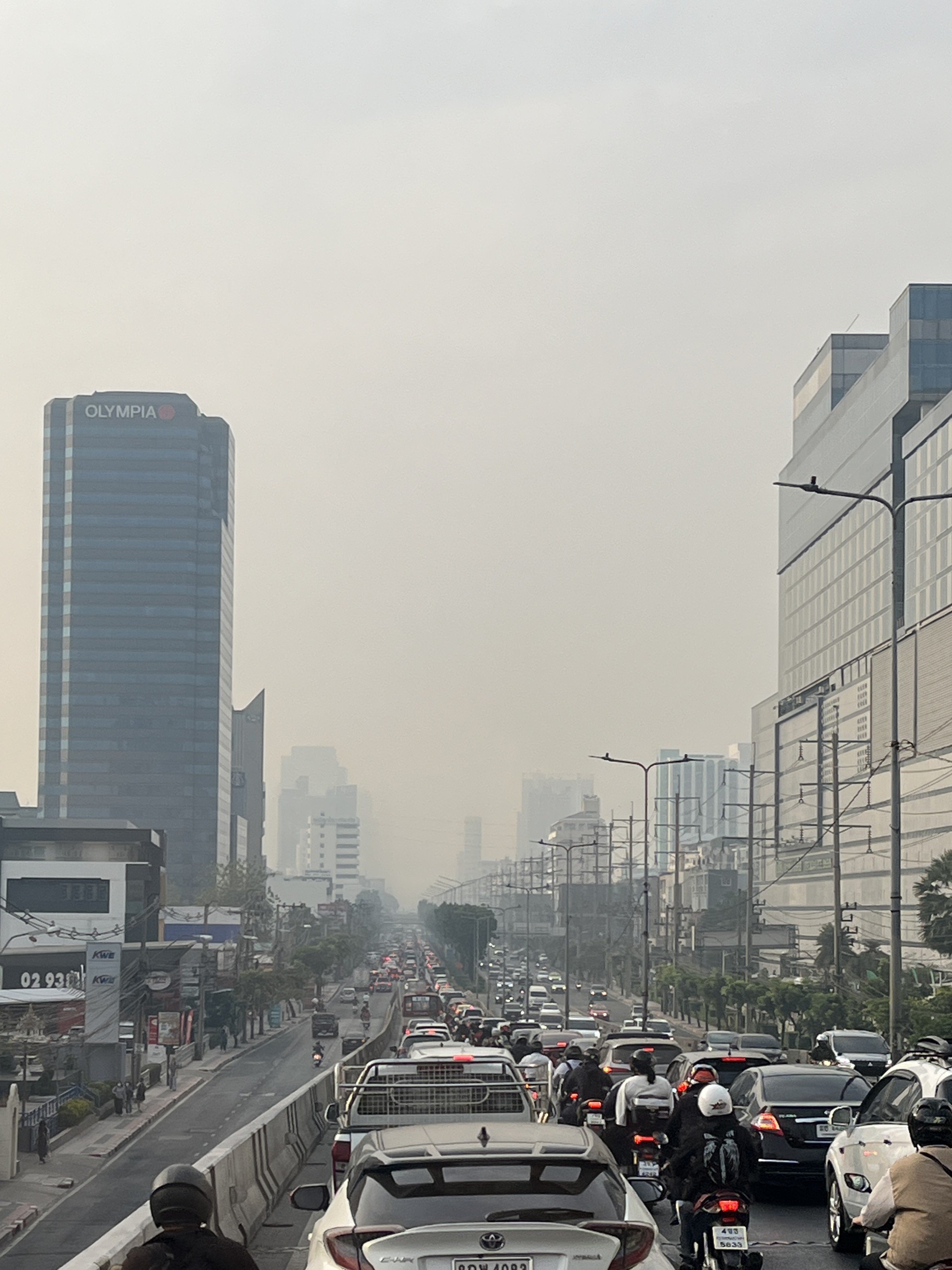The Air
by Taka
The air quality in Bangkok is dreadful this time of year, with PM2.5 levels soaring to hazardous heights. According to IQAir, the average PM2.5 concentration in Thailand in 2023 was 74, which is 4.7 times higher than the WHO’s annual air quality guideline. Last week, some areas of Bangkok recorded air quality indices exceeding 200, which explains the countless photos and videos of hazy cityscapes circulating on social media and TV. I usually try not to overreact, but I couldn’t help wearing a mask as the air was visibly murky.
On January 25, when PM2.5 levels suddenly dropped, I hopped on a public bus as usual to head to the office, only to notice something unusual—no one was paying the fare. I later learned that, as part of government measures to combat air pollution, public buses and electric trains were free from January 25 to 31.
Ironically, one of the main contributors to Thailand's poor air quality is the older buses and trucks that still dominate the roads, emitting clouds of pollutants from their outdated engines. There’s more to the story. Public buses in Bangkok typically have conductors whose main job is to collect fares and issue tiny tickets. But during my bus ride home that Monday, I saw the conductor playing a game on his smartphone, likely enjoying a rare break from collecting fares.
That unpleasant week got me thinking about perspective. What’s seen as “bad” air quality varies greatly depending on where you are. In my hometown, Tokyo, PM2.5 levels are much lower than in Bangkok. Most people there don’t even check the air quality index, but if it exceeds 50, many consider it alarming. In contrast, people in Bangkok see that level as relatively good. Once the air clears, though, news about PM2.5 fades away, and many seem to forget the issue until the next crisis hits.
It’s worth noting that burning crops and industrial emissions are also significant contributors to the high PM2.5 levels, but I can’t help linking this problem to car usage through a theory I learned in university: The Tragedy of the Commons, a concept introduced by American ecologist Garrett Hardin. He observed that when individuals share access to a common resource, they often prioritize personal gain, ultimately depleting or damaging that resource.
Clean air, a shared resource, is being steadily eroded by vehicles, which emit vast amounts of PM2.5 and other pollutants. While electric vehicles (EVs) are often hailed as a cleaner alternative, they’re not entirely free from blame. Tire wear and road dust also contribute to particulate pollution, and these factors don’t vanish with a switch to EVs.
While acknowledging that cars are an absolute necessity for most, simply driving because it is a convenient option or to avoid the hot and humid outside temperatures where a short walk may suffice, is counter productive. It’s ironic how many people invest in air purifiers and car filters to protect themselves while ignoring the broader issue of improving air quality for everyone. This is the tragedy of inaction.
Education plays a critical role in addressing this kind of challenge. It helps us identify what truly matters and prioritize sustainable solutions. That’s why we’re committed to our Saving Energy 101 program, designed to educate students on the importance of energy conservation. The program is gaining momentum, and we’ll continue doing everything we can to make a difference.


